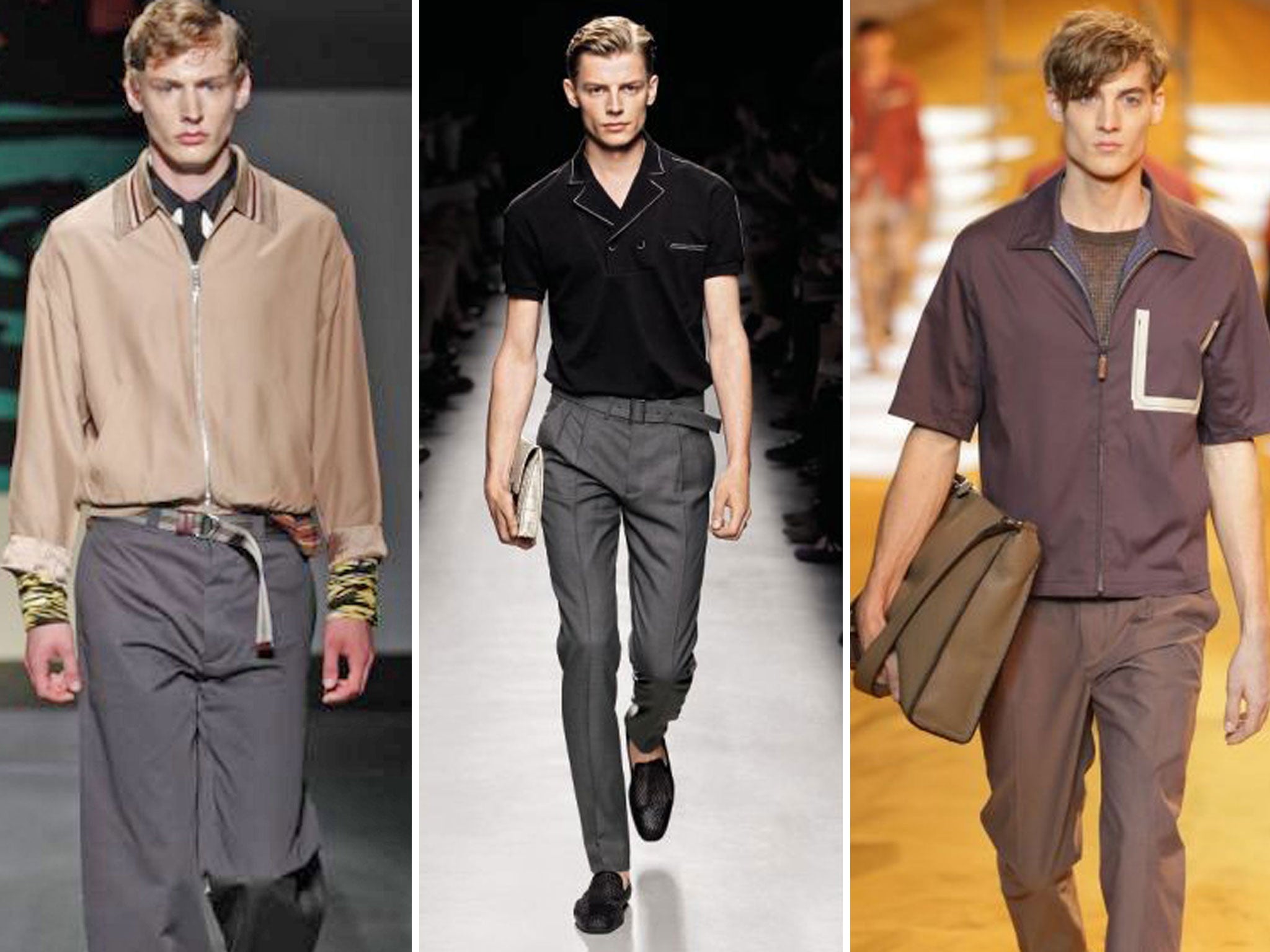Menswear: The all-American look
The Beat poets left behind more than just a literary legacy, as menswear designers continue to channel the spirit of rebellion through their style

Your support helps us to tell the story
From reproductive rights to climate change to Big Tech, The Independent is on the ground when the story is developing. Whether it's investigating the financials of Elon Musk's pro-Trump PAC or producing our latest documentary, 'The A Word', which shines a light on the American women fighting for reproductive rights, we know how important it is to parse out the facts from the messaging.
At such a critical moment in US history, we need reporters on the ground. Your donation allows us to keep sending journalists to speak to both sides of the story.
The Independent is trusted by Americans across the entire political spectrum. And unlike many other quality news outlets, we choose not to lock Americans out of our reporting and analysis with paywalls. We believe quality journalism should be available to everyone, paid for by those who can afford it.
Your support makes all the difference.Fifties' style is perenially popular in the world of menswear, so it's not surprising that contemporary designers have been inspired by that period of unprecedented social change when fashion broke through a stultifying atmosphere that is all too familiar today.
This spring/summer, Italian brands were some of the biggest proponents of mid-century staples that are indelibly linked to the all-American look. Short-sleeved shirts with casual spread collars, pleat-fronted chinos, white T-shirts and military-inspired outerwear were given a modern spin by Bottega Veneta, Valentino, Fendi, Prada and Missoni. It's a coincidence, perhaps, but the Fifties were a time when Italy's fashion scene was enjoying the reflected glory of its association with the golden age of Hollywood.
But rather than the squeaky-clean image of American youth that was a huge export at the time, it is the rebel undercurrent that has become far more relatable. The original Beat generation can be identified in this season's catwalk offerings; albeit a sanitised, super-luxe version.
While they may have enjoyed freedom to experiment with language, drugs and sexuality to a certain extent, the narrow conventions of dress in that period meant that there was little room to do the same with clothes.
As such, the three most famous figures of the movement represented the different styles epitomised by the Fifties: Jack Kerouac was of a utilitarian bent, in shirts and chinos, work boots and military jackets; Allen Ginsberg had the markings of a prepster in his horn-rimmed glasses, shirts, and shawl-collared cardigans; while William S Burroughs had a certain fondness for neat and natty slim-fit tailoring.
In later years, beatnik style became a pastiche – a blight that is affecting the modern-day hipster, a term now so pejorative that nobody will admit to it. But before the bongos and the berets, the soul patches and all-black outfits, the Beat poets had a style that was far more in keeping with societal norms than the rest of their behaviour.
While the style of the Beats may be easily duplicated on the surface by choosing a few quintessentially Fifties pieces, of which there are plenty this season, it is the spirit of the rebel beneath that makes it a recurringly attractive prospect to both designers and the man on the street.
The late Eighties and Nineties grunge movement saw the original Beat look go through something of a renaissance, as the uniform of that sub-culture was born out of a need for functional clothing; a sense of exhaustion with the status quo and a rejection of materialism that links back to those literary forebears.
Although the current commitment to nostalgia, to romanticising and revising the past, goes against what the Beat poets and the generation they inspired were striving to achieve – destroying the old in pursuit of the new, charging forward to pursue that end – the frenetic energy of the movement is undoubtedly contagious. Perhaps that's why it's resonating once again. Although it is a polished and commercialised version offered on the catwalks, the appeal of non-conformity transcends the four-figure price tags and taps into the rebel inside.
Join our commenting forum
Join thought-provoking conversations, follow other Independent readers and see their replies
Comments